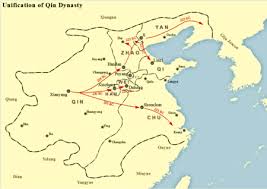
The Mausoleum of Qin Shi Huang: Where History Rests
The Mausoleum of Qin Shi Huang, a testament to China's first emperor, stands as a monumental achievement of ancient engineering and a captivating window into China's imperial past.
Location: Nestled in the Mountains of Shaanxi
This awe-inspiring mausoleum is located approximately 30 kilometers east of Xi'an, the historical capital of Shaanxi province in central China. It lies at the northern foot of Mount Li, a site chosen for its auspicious feng shui and its proximity to the ancient capital of Xianyang, where Qin Shi Huang ruled his vast empire.
A Legacy Carved in Stone and Earth
Construction of this colossal necropolis began in 246 BCE, shortly after Qin Shi Huang, founder of the Qin dynasty and the first emperor of a unified China, ascended the throne at the age of 13. The project spanned nearly four decades, finally reaching completion in 208 BCE, two years after the emperor's death. Thousands of laborers and artisans dedicated their lives to realizing the emperor's vision of an afterlife mirroring his earthly grandeur.
More Than Just a Tomb: A City for Eternity
The Mausoleum of Qin Shi Huang is far more than a simple burial mound. It is a vast complex encompassing an area of over 50 square kilometers. The site is comprised of both inner and outer sections, each meticulously planned and richly appointed with treasures and offerings befitting an emperor.
The Terracotta Army: Guardians of the Afterlife
Perhaps the most renowned feature of the mausoleum is the Terracotta Army, discovered in 1974 by local farmers. This life-sized army of thousands of clay soldiers, chariots, and horses stands in battle formation in underground pits, poised to protect the emperor in the afterlife. Each figure is unique, with distinct facial features, hairstyles, and attire, showcasing the remarkable skill and artistry of the Qin craftspeople.
An Ongoing Excavation: Unveiling the Past
Although significant portions of the mausoleum complex have been excavated and opened to the public, the central tomb of Qin Shi Huang remains undisturbed. Archaeologists and historians continue to meticulously study and explore the site, slowly piecing together the secrets and splendor of this ancient wonder.
Q&A
1. What is significant about the location of the Mausoleum of Qin Shi Huang?
The mausoleum’s location in Shaanxi province holds historical and cultural weight. It is near Xi'an, a city steeped in ancient history, and Mount Li, significant in Chinese mythology and chosen for its auspicious energy.
2. Why is the Terracotta Army considered such an important archaeological find?
The Terracotta Army offers an unprecedented glimpse into the military practices, artistry, and cultural beliefs of the Qin dynasty. The sheer scale and detail of the figures provide invaluable insights into ancient Chinese civilization.
3. Why hasn't the central tomb of Qin Shi Huang been excavated?
The decision to leave the central tomb undisturbed is multifaceted. Respect for the deceased emperor, concerns about preserving the integrity of the tomb's contents, and the lack of adequate technological resources to excavate safely all contribute to the decision to delay exploration.